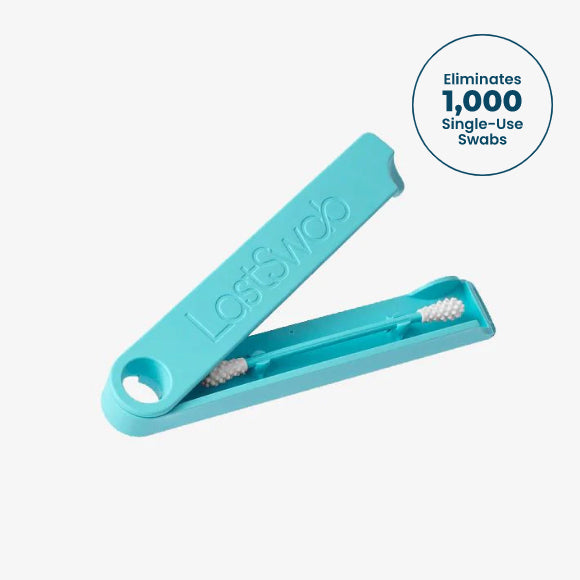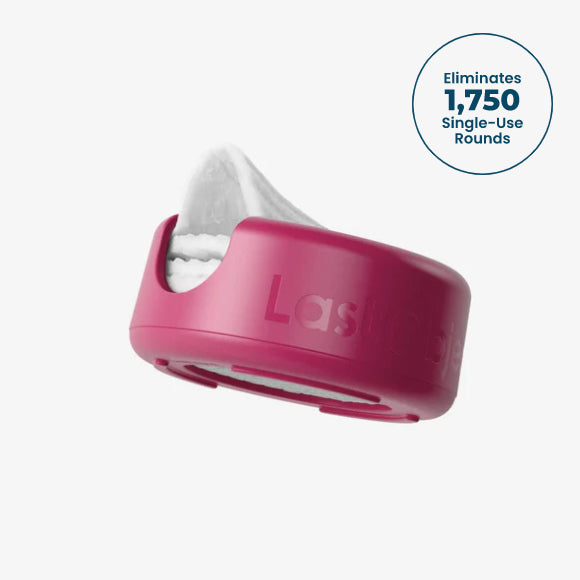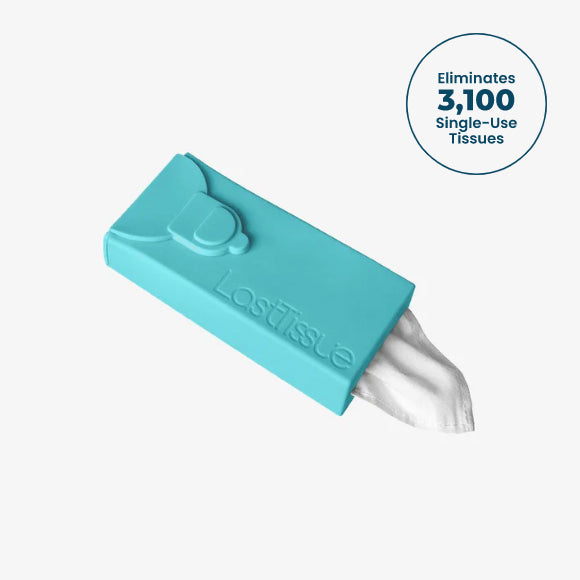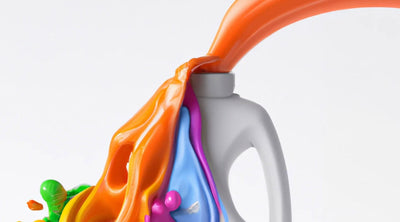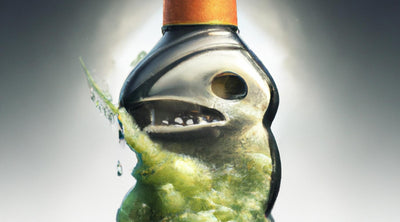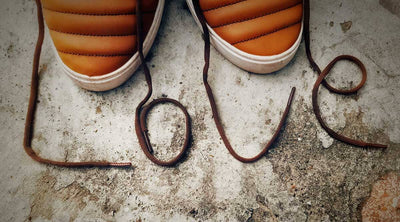Can Silicone Be Recycled?
December 09, 2021When you think of silicone, the first thing that might come to mind is its use as a medical implant. Since it is an inert material, it is unlikely to leach potentially toxic chemicals into the human body. But silicone is also used in many products that you use during your daily life.
You will find it in many common household items, such as your cooking utensils or inside your washing machine. It also makes a great electrical insulator, so your laptop or TV is very likely to contain silicone components. Since it is so durable and can be reused many more times than plastic, it is considered an extremely versatile material. But is silicone recyclable? We explore this topic further below.

What Is Silicone?
Silicone is often referred to as a rubber, but this is not technically true. They are both a type of polymer, so they share similar physical properties such as being flexible and elastic. However, rubber is created from the sap of the rubber tree and silicone is artificially created through a much more complex process.Silicone is a synthetic compound primarily composed of oxygen and the element silicon (Si). This key element – silicon – is extracted from silica (SiO), which is a compound naturally found in sandstone and other rocks. The process to create silicone involves heating and distilling the element silicon. It is then combined with other chemicals, such as methyl chloride.
Due to the arduous nature of this process, silicone is more expensive than naturally found rubber. However, silicone is also far more heat resistant. So, although the process to create silicone is more difficult, it is still a highly sought after material.
Is Silicone An Eco-friendly Choice?
The world is facing an environmental crisis due to single-use plastics, so consumers are increasingly trying to make more eco-friendly choices. For decades, plastic has been used in abundance to create everyday items, which are often discarded after one or just a few uses. These products now fill our landfills and oceans — and to make matters worse, plastic does not biodegrade. Instead, it breaks down into smaller and smaller particles, which then enter our food supply and negatively affect aquatic life.
This begs the question, “is silicone an eco-friendlier alternative to plastic?” The answer is a definitive yes since silicone is more stable and will not break down into microparticles when it enters the environment. That being said, silicone and plastic still share the same problem; neither of them is biodegradable.
What about silicone vs. glass? Glass is another durable and less toxic alternative to plastic. Consumers are now favoring glass products over plastic due to these qualities. Glass is extremely inert, which means that it does not leach any toxins into the environment and remains very stable over time. It can also be recycled in a “closed-loop”. This means that you can repeatedly recycle glass, with no loss in quality and without creating any harmful by-products.
Silicone, on the other hand, loses some structural integrity every time it is recycled. Therefore, silicone recycling is considered “downcycling”. This means that each product created from recycled silicone will be of lower quality and durability than the product it was made from. This puts glass at an advantage over silicone when it comes to recyclability.
Does Silicone Have Disposable Elements?
We know that the by-products of plastic are harmful, but what about silicone? Will silicone in the environment harm animals and aquatic life? Does silicone biodegrade?
According to some sources, it can take anywhere from 50 to 500 years for silicone to break down. The length of time depends on external factors in the environment, such as the surrounding temperature. This means that once the silicone is created, it will exist in the environment for a very long time.
Silicone is typically composed of five main chemicals: polydimethylsiloxane, cyclosiloxanes, methyl hydrogen siloxane, phenyl methyl siloxane, and silica. Only the first one, polydimethylsiloxane — or PDMS for short — is recyclable, while the other four are not.
So, while silicone can be recycled, there will always be some disposable elements that will not be reused. Siloxanes — the group of chemicals found in silicone — are generally considered non-toxic.
This is backed by a study, which exposed rats, guinea pigs and rabbits to various forms of siloxanes. The results of the study showed that in general, they all ranked low for siloxane toxicity. However, this does not mean that ingesting large amounts of silicone by-products is a good idea. One study, which involved exposing mice to high amounts of cyclosiloxane, showed that they experienced liver and lung damage. Luckily, silicone tends to break down into larger parts than plastic. This means that it is less likely to be naturally consumed by an animal in the environment.
It is worth noting that silicone may sometimes be incinerated after disposal. Thankfully, burning silicone does not produce any toxic fumes. This contrasts with plastic, which releases toxic carcinogens into the environment when incinerated.
Is Silicone Biodegradable?
Silicone does not biodegrade in the same way that a natural material like paper or cotton would. Since it is so heat resistant, it tends to linger in the environment (often the landfill) for a long period of time. Eventually, it breaks down into smaller pieces in a process that could potentially take hundreds of years. These constituent parts will never be used by a living organism. So, while they may generally be non-toxic, they are essentially useless for the environment.
Silicone does not biodegrade because it is a new, synthetic material. There are no naturally existing microbes that can break it down the same way they would break down a banana or a piece of cardboard. However, scientists are researching ways to create organisms that can naturally break down these plastics. It is possible that in the future, we may find a way to also solve the biodegradability issue of silicone using this research.
But in the meantime, when you throw out a silicone product without recycling it, that item is going to stick around in the environment for a very long time.
Is Silicone Recyclable?
Currently, there are no curbside recycling pick-up programs in the US that accept silicone. So, can you recycle silicone in the US? The answer is yes, but you may need to take it to a special silicone recycling plant.
The process of recycling silicone involves breaking the material down into tiny pieces, which are ground up and heated to an extremely high temperature. The resulting vapors are then cooled and collected as a liquid. Thereafter, this liquid goes through multiple filtration processes until it can be transformed into silicone oil, which is used to create new silicone products.
According to ECO U.S.A. recycling one ton of silicone saves 5,774 kWh of energy, 16.3 barrels of oil and 98 million BTUs of energy. However, recycling silicone still requires the consumption of fossil fuels. These fuels are used to produce the extremely high temperatures needed to break down the silicone. It is more eco-friendly to recycle silicone than to create new silicone, but the best option is to keep using the silicone products you already have.
It is also important to remember that silicone will inevitably degrade in quality every time it is recycled. This “downcycling” process means that eventually, the silicone will reach a point where it is no longer usable.
Can Silicone Be Recycled At Home?
Are you struggling to find any silicone recycling facilities near you? You can actually recycle silicone at home in a few easy steps. This is a great alternative to throwing your old silicone products in the trash.
Step 1: Prepare a mold for your new silicone product.
You can create one from scratch or you can use an object that you already have to create the shape you need. Most craft shops sell mold-making kits that you can use during this step.
Tip: Make sure you are not using a mold made from silicone to create a new silicone product. This is because the mold itself will bond with the fresh silicone.
Step 2: Grind down your silicone.
You can shred your silicone using scissors or a knife. Silicone comes in different degrees of strength and hardness — so if it is a softer form of silicone, you can use a metal kitchen grinder to break it down. Run it through the grinder a second time to make the granules even finer.
Step 3: Mix the recycled silicone with fresh silicone.
Powdered or liquid silicone mixes are readily available to buy online. You can mix your shredded silicone with fresh silicone and follow the instructions on the mix to create a new silicone product.
Tip: Don’t use too much recycled silicone when mixing with the fresh silicone, as this will make the new product weak and less durable.
Silicone Isn’t A Perfect Solution But It’s Better Than Plastic
For the eco-conscious consumer, silicone is a superior choice to a material like plastic. It is far less toxic, more stable, and silicone products can be used for a long time before they wear down or degrade. Silicone in the environment does not cause the same negative impact as microplastics. It breaks down slowly and the by-products of degraded silicone are generally less harmful to organic life. It also retains its quality better than plastic during the recycling process.
However, silicone still carries a significant carbon footprint. The process to create silicone uses large amounts of fossil fuels. The same is true for silicone recycling. If someone is aiming to reduce their carbon footprint, then these are issues to consider.
Instead of solely focusing on recycling, we can make conscious decisions as consumers. We can only buy products that we really need and that we will be able to reuse for a long time. And when it comes to durability, silicone comes out on top. It is a long-lasting, safe material that we can make extensive use of, without the need to throw it away.
MORE Sustainability 101 ARTICLES View all ›
Ready to make
the switch?
- Powerful Cleaning
- Dissolves Easily
- Skin-Friendly
- Eco-Friendly
- No Mess





